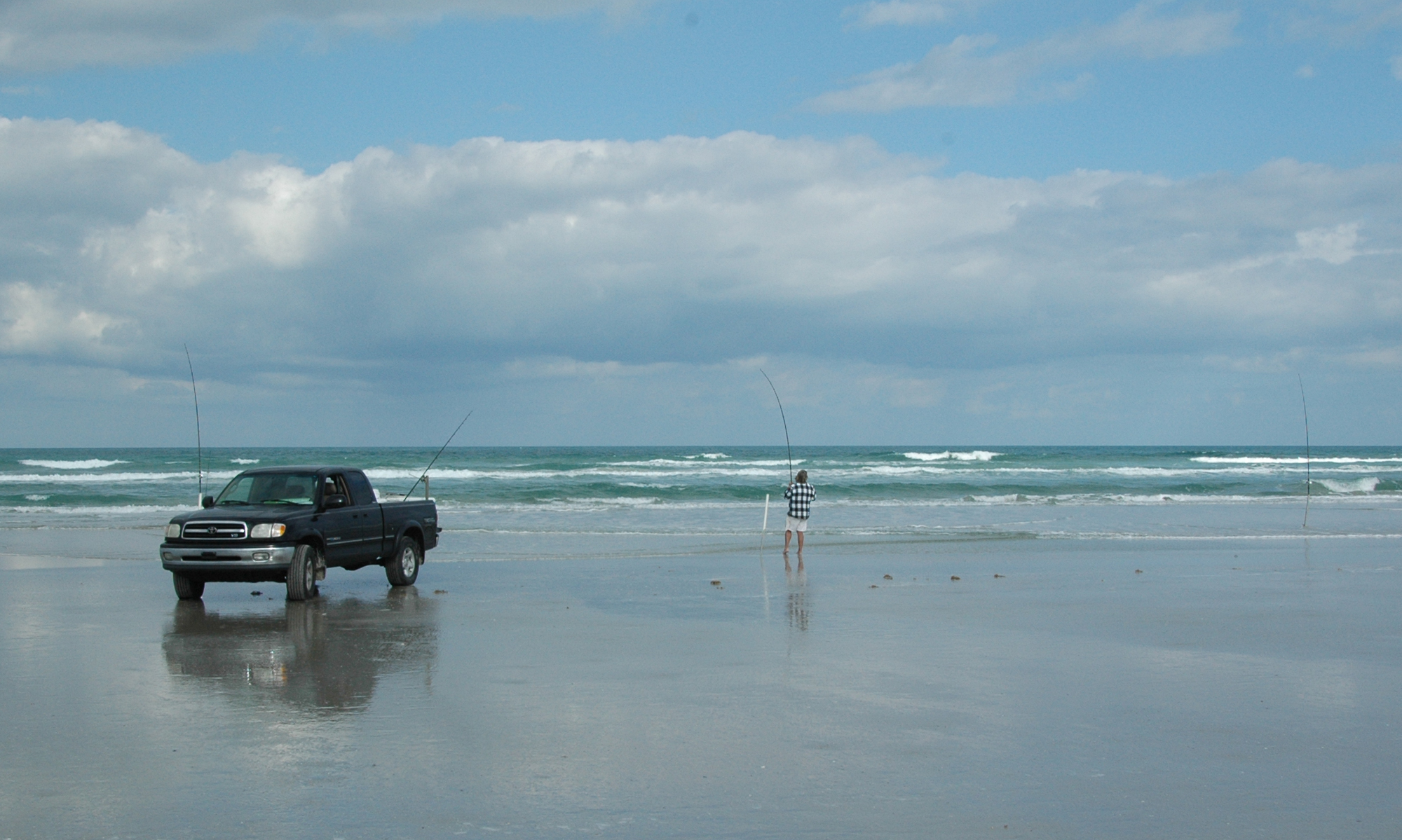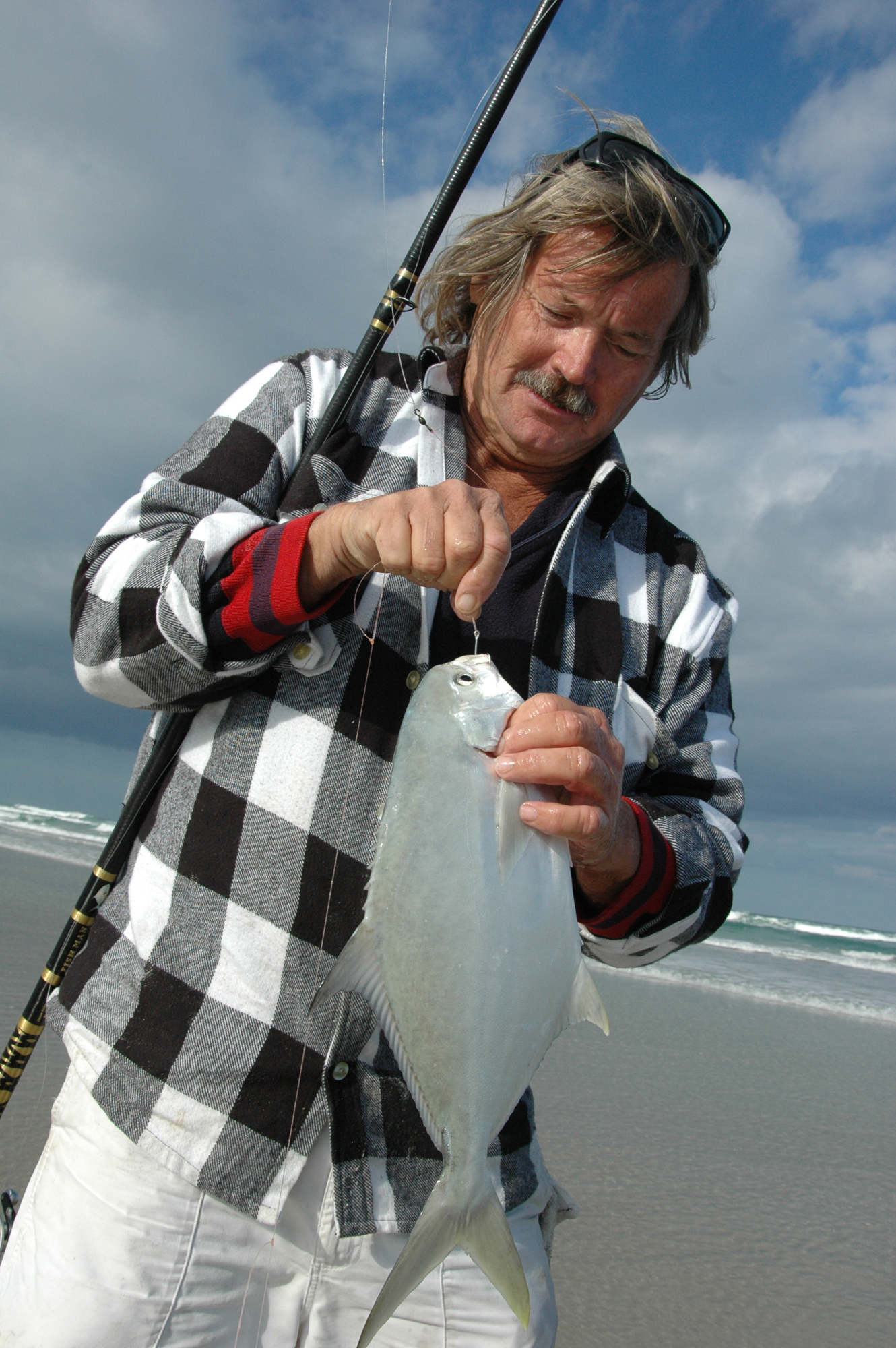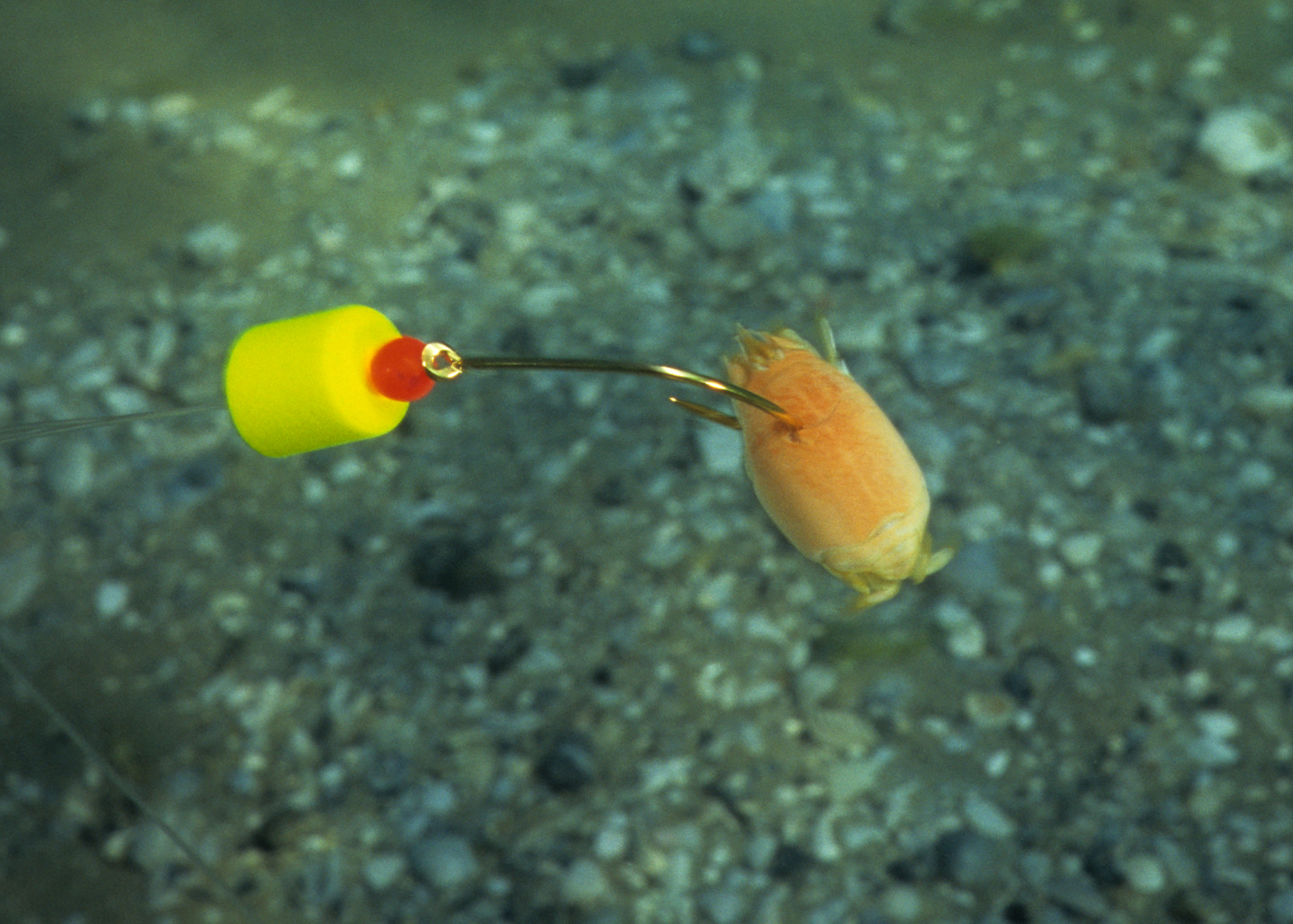October 15, 2012
By David Conway
On surf road, take only what they give you.
 On New Smyrna Beach, shown here, and a few other Florida locales, you can drive to your favorite spot on the beach.
On New Smyrna Beach, shown here, and a few other Florida locales, you can drive to your favorite spot on the beach.
No fish drives me crazy like pompano—drive being the operative word here. Temperamental and flighty, quick as light itself and nearly as unreliable as the lotto—I love pompano. But if you want to consistently hook up to pomps from the beach, you're going to have to get familiar with the road. Here's your roadmap for how to catch Florida pompano.
Now, whiting are fine, red and black drum are fun, snook are good too. I wouldn't even turn down a bluefish or two. But when it comes to winter surf fishing, all these are supporting cast to that lead player—pompano.
I keep about a 60-mile range, between Juno Beach and north Fort Pierce, that I'm regularly willing to travel between November and May to fish for pompano, with one or two longer-range treks each season to new places. I'll try to track pompano by figuring out where the most recent weather fronts and temperature drops will push the fish. Once I remember that's a completely fruitless pursuit, I'll get in touch with my network of informants for the pompano's current location and immediately—that morning or evening—go to fish for them when the word is good. Cell phones start ringing soon after dawn, with news of that morning's bite. After 24 hours, burn that information or it will burn you.
The epic traveling of Larry “Fishman” Finch of Jacksonville makes my own—and most anglers'—pompano wanderings look like quick commutes. In search of pomps and other winter surf catches, Finch, who also teaches a surf fishing seminar at the FS Fishing Shows and runs his own family operated seafood market, Atlantic Coast Seafood in Jacksonville, will fish from his hometown south to Hobe Sound Beach and won't hesitate to cross to the west coast when the bite's on there.
Last year, according to Finch, Northeast Florida pomps stayed between Daytona Beach and New Smyrna Beach all winter, because the water temperature stayed in the 60s. The temperature has to get into the 50s to drive them south, he says.
“It was so good I didn't even have to go as far south as Playalinda,” he told me at the spring season's end, back in May.
Once the temperature does drop steeply, the pompano go south fast. Gulfside pompano will run down into the Lower Keys in January and February, and in the Atlantic, pompano south of the Palm Beaches are common, though access to them is difficult.
The structure and contours of a beach determine a great deal about the style of the fishing there. In northern Florida, beaches slope out gently, and the tides slowly wash in, creeping up over the wide, broad shorelines. In that terrain, anglers like Finch employ tall sand spikes with rounded poles that easily allow the sea to wash around them, and they'll fish in the surf as the water floods around them, up to their knees.
“You can get two to three hours of fishing here on the incoming tide, and then they'll move across the bar,” Finch says. “When the tide's low, they tend to hang out farther, behind that bar, and that's when you have to have the long casts to get them.”
South of Canaveral, the beaches drop off precipitously to the surf, and the troughs are carved steeply, the bars high and the water is closer to the dunes. When the tide crashes in, pompano may charge the beach or run the trough, but you'll be standing on dry land and trying to find the fish.
 Larry “Fishman” Finch lands a good pompano.
Larry “Fishman” Finch lands a good pompano.
The Panhandle's surf bite starts with flounder and reds in the fall, and pompano kick in sometime in October or November. When the pomps hit a lull in the coldest months, whiting fill in the gap before pompano bounce back by February. Like the Northeast's, the Panhandle's beaches slope gently seaward, but the critters in the sand itself are not the same in the regions.
“One of the main differences from the east coast in our beach fishing,” says Tom Putnam, owner of the Half-Hitch Tackle stores along the Panhandle, “is that we don't have as much shellfish and crustacean life close to our beaches other than sandfleas, and, unfortunately, beach projects right in Panama City killed off our sandflea populations a couple years ago. Though sandflea populations are still good around Cape San Blas, Mexico Beach, and south Walton County.
“The interest in surf fishing around here all depends on how good the pompano bite is,” Putnam admits. “That Dan Russell Pier is reopened is good news. When there's a good bite on the pier, word spreads fast.”
So much of winter surf fishing depends on water quality. If you don't have that hot tip or you just want to go, you can drive your range checking conditions at various beaches until you stop at the best of the day. Remember, pompano like first light and last light to feed, and moving tidal flows. Great conditions for pompano are powdery blue to light green water, with those visible ruffles of sand flaring near the shorelines where currents churned by the tidal flows between cuts stir up the critters pompano eat. Dark green, turbid water might be fine for bluefish and mackerel, but pompano will not often freely venture into overly turbid waters with low visibility. You can take a big clue to their favored habitat from their color. The gleaming gunmetal blue of pompano skin reflects the colors of the waters that they like to frequent.
To watch a surfcaster hurl his rig into that wild sea is a beautiful thing, as fine as a well-made fly cast or a well-thrown castnet. To watch that surfcaster gingerly bring in a pompano or six is a sight some might call even finer.
But between the beach and the beached fish there is a great difference, all of which is made up with that cast. And how to get the greatest distance is the stuff of most surfcasters' very waking—and some sleeping—dreams.
For casting distance and keeping line above waves, most experts choose conventional surf rods in the 12- to 14-foot range, rated for 3 to 6 ounces. Saltwater durable reels with no levelwind are favored, allowing for longer casts with less effort. The best reels have centrifugal or magnetic spool brake systems which may be adjusted to help prevent backlashes. Monofilament in 15- to 20-pound test is ideal (braided poly tends to pull the sinker off bottom in heavy surf). Most often, you'll be throwing 4- to 6-ounce weights, either the pyramid leads, or the more expensive, but more effective spider/sputnik style weights.
Whiting, drum, croakers and flounder hang close to the shoreline, usually in the first trough, as do snook and redfish, in their appearances in the surf. So I always like to have a 7-foot, 10-pound-class spinning rod, with a lighter sinker, to catch any fish coming down the trough, including the biggest, brazenest pompano on their inward assaults for crabs and sand fleas.
The truth is, from the central coasts of Florida northward, pompano aren't strictly a winter surf catch. There might be pompano runs well into the summer. But even though they might still be out there, I'll stop fishing for pompano after the winter-spring season, because it makes me feel so good to anticipate and finally welcome them back each year. I wouldn't ever want to get tired of a fish that has “pan” as its middle name.
Essential Equipment for the Surfcaster
Surfcasting's simplicity is one of its main appeals. You need your casting outfit, a few weights, baits and leader material and rigs and, new this year, you'll need a fishing license when fishing from shore. If you really want to get fancy, you'll want knife, rags, dehooker, mesh bag to keep live sandfleas, sand spikes—all of which can conveniently fit on a cart (Angler's Fish-N-Mate sells three models of carts, from about $130 to $210: http://www.rodrack.com/home.php.) Fellow FS contributor Mike Conner also brings binoculars, “so that I can look down the beach to see what people are bringing in and find out exactly how far out they're casting to get the fish,” he says.
 Sandflea is a choice bait on both Florida's Atlantic and Gulf coasts.
Sandflea is a choice bait on both Florida's Atlantic and Gulf coasts.
Finch has plenty of rigs pre-made, but he also brings his beads with him, to rig with the exact bead color to match the color of the coquina clams on the beach that day. “You never know if the clams are going to be blue, white, or yellow, so I have all those beads ready. I also bring hardshell clams with me to the beach. Those are good baits.”
Carry a variety of bait, he advises, including possibly fresh clams, live shrimp, sandfleas live and sandfleas blanched. “When a man's beside you catching pompano on blanched fleas—we call them cookies—and you're fishing live ones, you better have those cookies.”
When fighting a pompano, go gently, Finch advises. Keep a loose drag to let them run, says Finch. “Only take what they give you.” FS

